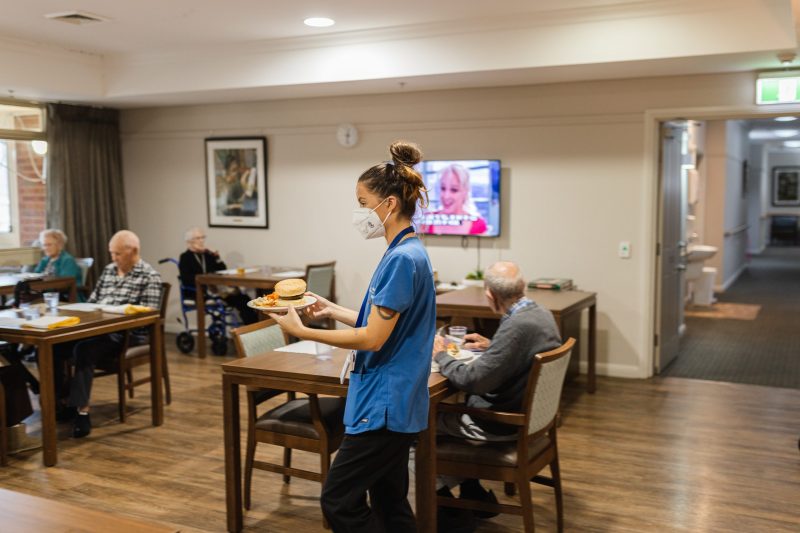Over the last three decades, Colin Osborne has worked in the health industry within community and area health, hospitals, and more recently aged care. Never in those 35 years has he seen the kind of crisis level exhaustion than what he sees on a daily basis from frontline aged care workers.
Colin Osborne is the CEO of Peninsula Villages on the NSW Central Coast which accommodates 300 residents across its three residential care facilities. With more than 350 staff, Colin says it’s time to shine a light on how dire the current situation is in aged care, as the rest of the community move on under the guise of ‘living with COVID’.
“As an independent, not-for-profit aged care provider, we, like many others in the industry, are constantly battling with one issue after another. Sector-wide lockdowns from COVID, staff shortages, reduced funding, higher overheads and increasing wages are impacting on the fundamental financial viability of aged care in Australia. By way of indication, the latest industry benchmarking surveys indicate that almost two thirds of aged care operators in Australia are operating at a loss. This is clearly an indication of the deteriorating viability of aged care services. There is just no end in sight to the issues we are facing,” explained Mr Osborne.
“But aside from the organisational issues, it’s the personal challenges our staff are faced with every day that need to be voiced. People working in aged care are feeling fatigued, they are exhausted, and they are frustrated.
“While life for most outside of aged care facilities has reverted to a new ‘normal’, restrictions in our industry still prevent our staff from resuming life to its full extent. Our frontline workers need to remain vigilant as they are integral to supporting vulnerable persons within our care, this often means missed events, social occasions and large-scale interactions.
“Staff shortages industry-wide mean that our care employees are having to go above and beyond to meet expectations of our residents and their families. Staff are not only working longer, but they are also multi-skilling across roles, working harder than ever before and under stricter and everchanging circumstances as we face outbreaks in the community,” continued Mr Osborne.
Chronic staff shortages were an issue in the industry long before the COVID-19 pandemic. Last year, the Royal Commission into Aged Care Quality and Safety recommended an increase in the award wage for aged care workers to help attract and retain staff. But the Federal Government has not implemented any pay rise.
“Instead of showing any action in regard to funding, the government continues to bag our industry for not living up to community expectations. The problem is, how can our workforce live up to what aged care should be, if we are underfunded, poorly publicised and most of all consistently fatigued?” continued Mr Osborne.
“In my opinion, the aged care sector in Australia has worked hard and done a good job to protect our older Australians, despite all the extra hard work and the administrative burden that has been added due to the COVID-19 pandemic – this has been added to what was an already over-burdened and underfunded sector.
“But what also needs highlighting is the lack of recognition for our industry. Frontline workers in hospitals and emergency services are often heard and praised by the public when it comes to their commitment and while there’s no denying their vital role in the system, I want to give a voice to our aged care staff.
“The NDIS has made pathways for a brighter future for the disability community, perhaps it’s time to shine a light on the value and significance of aged care in Australia?
“There are about 4.2 million Australians who are aged over 65. That’s almost 20% of our population who may very much need our care in the near future,” he concluded.
